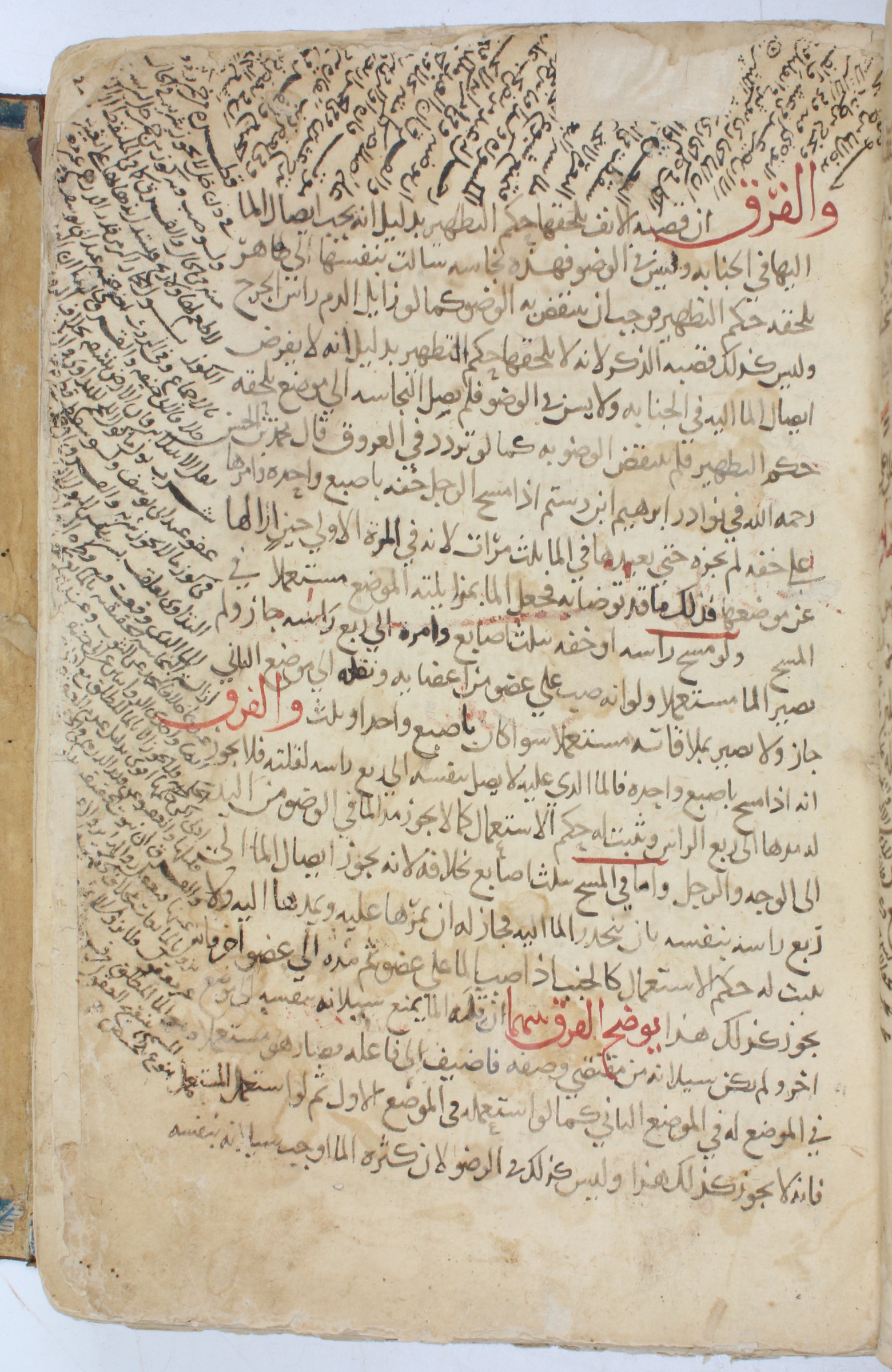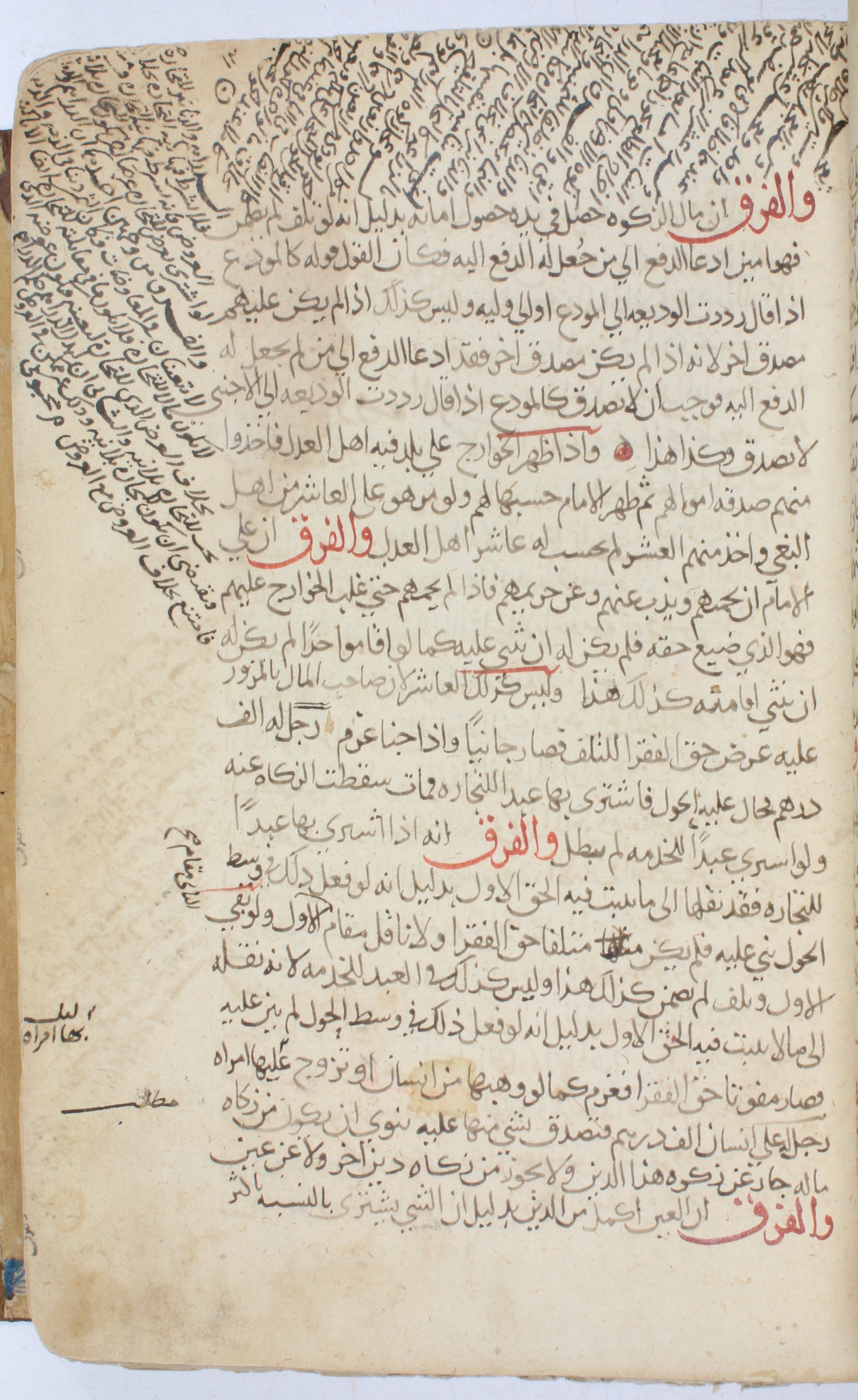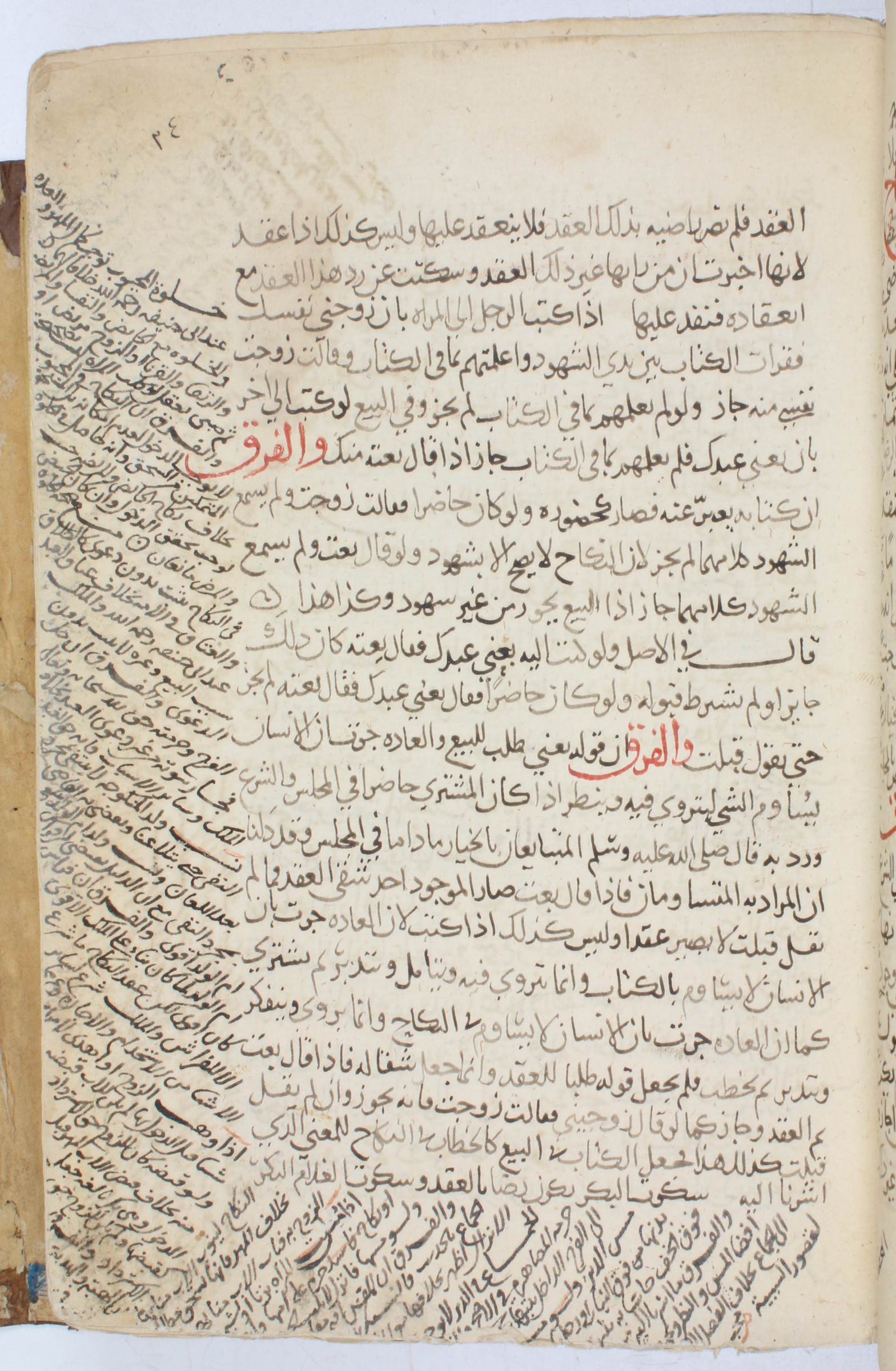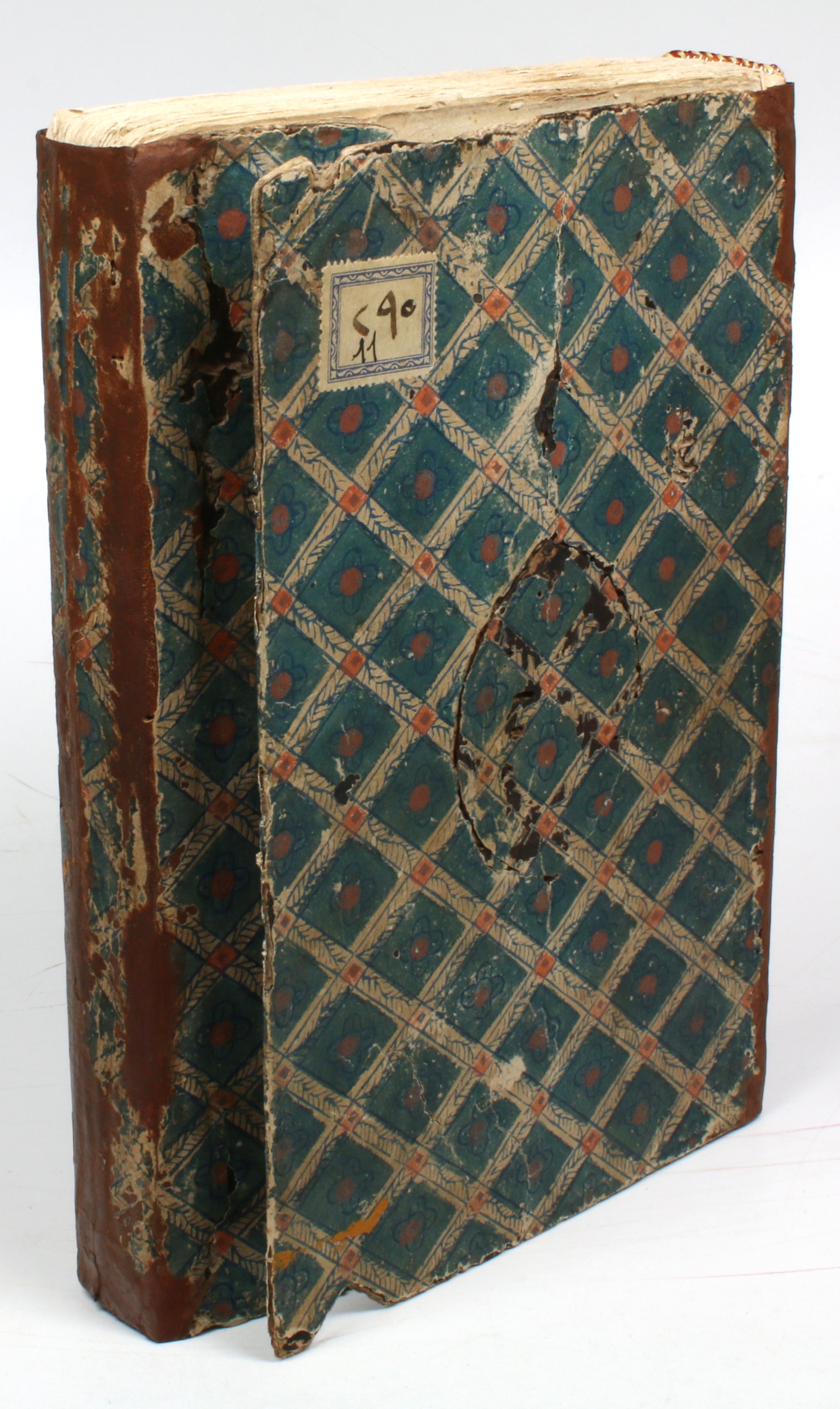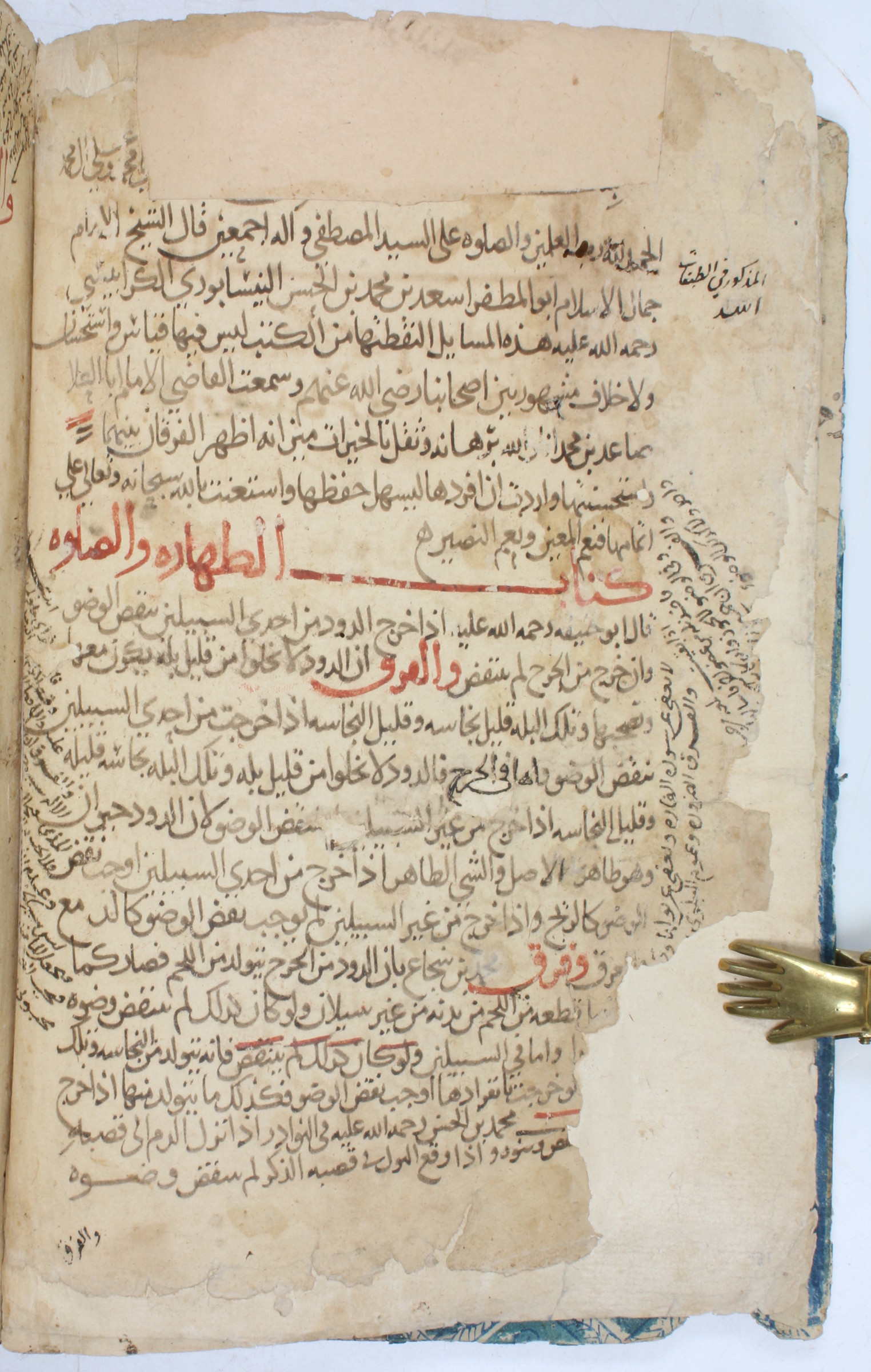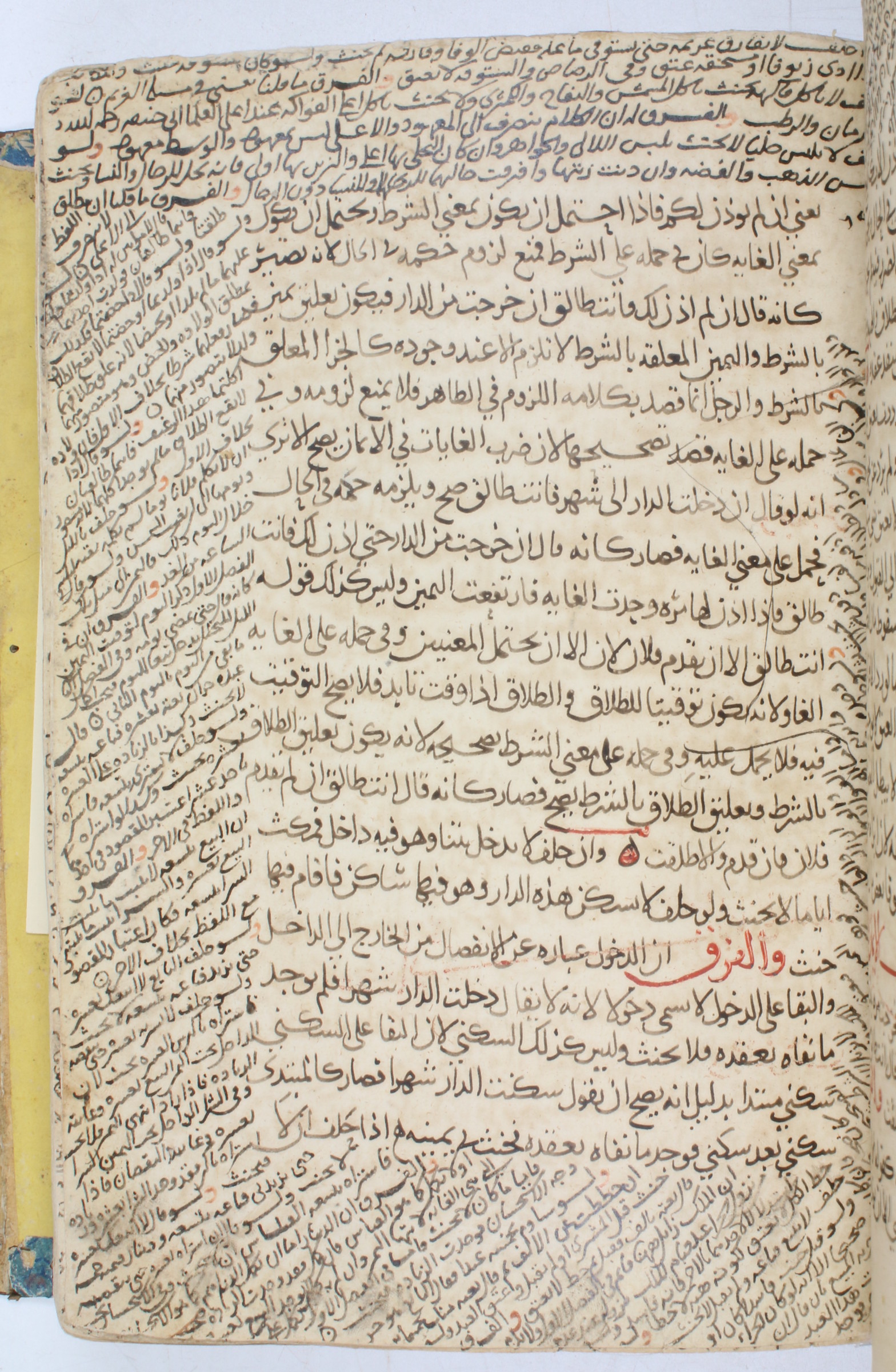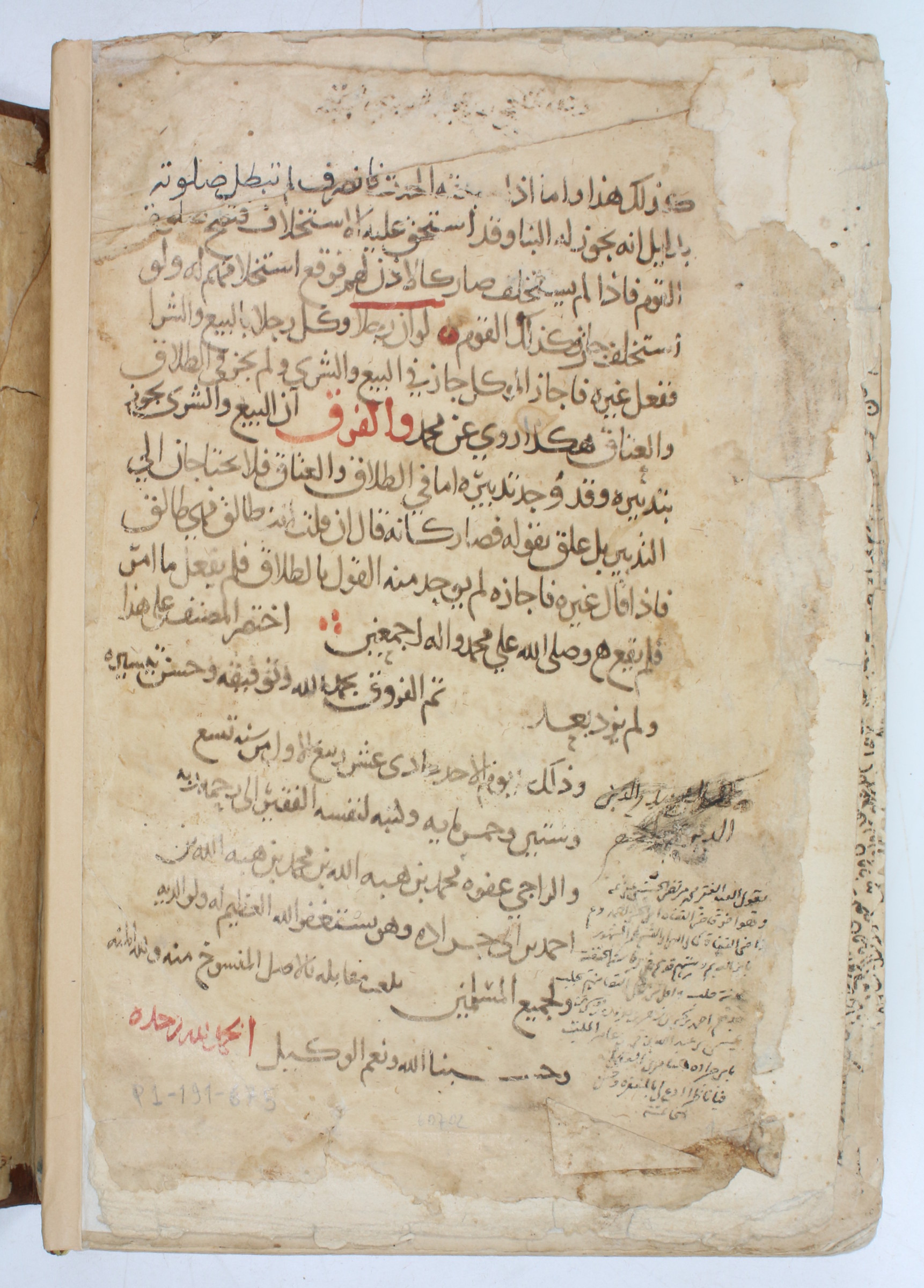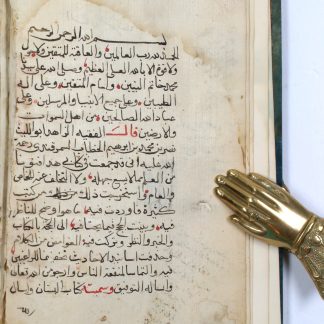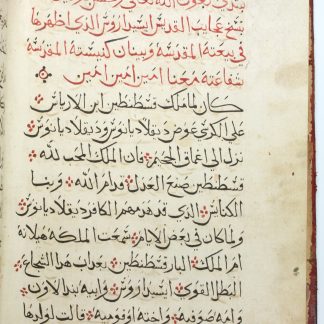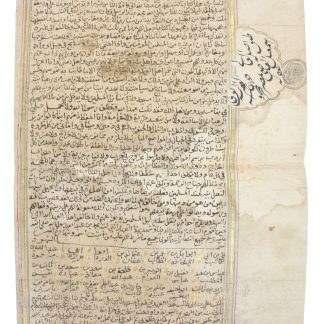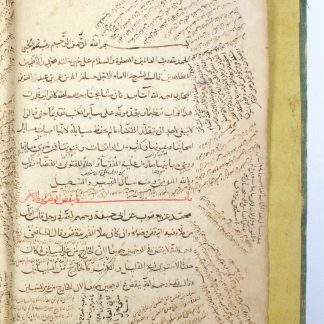The earliest witness, copied during the author's lifetime from his lost autograph
Kitab al-furuq [The Book of Legal Distinctions].
4to (180 x 260 mm). Arabic manuscript on oriental paper. 190 leaves. 20 lines of unvocalized black naskh in black and occasional red ink. Numbering of quires partially preserved in the upper left corner, foliation and part of the claims subsequent to the copy, numerous marginal glosses. Book block stored loosely in later coloured paper boards with leather spine and fore-edge flap.
The earliest surviving textual witness, copied during the author's lifetime from his lost autograph, of what is the first and still the most popular Hanafi text on legal distinctions: the "Kitab al-furuq" by Abu al-Muzaffar As'ad ibn Muhammad ibn al-Husayn al-Nisaburi al-Karabisi al-Hanafi (d. 1174/75). Composed in the 6th century AH, most likely in Samarkand, where the author was living at the time (cf. Saba, pp. 71, 204), this is the only text on furuq (legal distinctions) to have been composed in that century and is also important as the first work on the subject in the Hanafi Madhhab. Several manuscripts of it are preserved (Cairo, Dar al-Kutub, 292 fiqh hanafi, undated; Cairo, Dar al-Kutub, 293 fiqh hanafi, dated 622 H [1224/25 CE]; Istanbul, Süleymaniye Kütüphanesi, Fatih 2039, dated 776 H [1374/75 CE]; Istanbul, Süleymaniye Kütüphanesi, Carullah 821, 1007 H [1598/99 CE]).
The present manuscript is of major importance as the oldest surviving manuscript of this text. The colophon provides the date of completion of the copy, Sunday, 11th of the month of Rabi I 569 H (20 October 1173), as well as the name of the copyist, Muhammad b. Hibatallah b. Muhammad b. Hibatallah b. Ahmad b. Abi Jarada. The colophon further states that the copyist prepared the manuscript for his personal use by collating the text (balagha) against the autograph, which is not preserved for us.
The scribe can be identified as a calligrapher who belonged to a powerful family of Aleppine intellectuals, the Banu'l-Abi Jarada, a Sunni family of the Hanafi rite (cf. James, p. 354). While no other manuscript in his hand is known to survive, he is referenced in the oldest dated manuscript of al-Hariri's "Maqamat". This codex, which bears an ijaza of al-Hariri dated Sha'ban 504 H (February 1111 CE), belonged to his first cousin, the famous historian and jurist, Kamal al-Din Abu 'Umar b. Ahmad b. Abi Jarada, known as Ibn al-'Adim. A reading mark dated 17 Jumada II 604 H (8 January 1208 CE) attests to the presence of our scribe in Aleppo and to his involvement in the literate circles of the time (on the subject of the manuscript and the reading mark, see MacKay, p. 22). He is later traced in Süleyman Müstakimzade's biographical dictionary of calligraphers, which states that Muhammad b. Hibatallah Abi Jarada was known to work in the manner of the great calligrapher Ibn al-Bawwab and copied an entire Qur'an during each month of Ramadan (Tuhfe-i hattatin [Istanbul, 1928], p. 464). He is said to have died in 628 H (1230/31 CE) at the age of 82.
Restored in the 19th century, notably the first leaf, with several remarginings and an added table of contents. Provenance: 1) from the collection of Paul Lebaudy (1858-1937), with the bookplate of his library at the Château de Rosny "La Solitude". The Château de Rosny is the former property of the Duchess of Berry; 2) latterly in a Parisian private collection, kept in the family for several generations over the 20th century and dispersed in 2022.
GAL I, 375 (464) & S I, 642. Cf. Elias G. Saba, Harmonizing Similarities. A History of Distinctions Literature in Islamic Law (Berlin, 2009). David James, "Qur'ans and Calligraphers of the Ayyubids and Zangids", in: Robert Hillenbrand and Sylvia Auld (eds.), Ayyubid Jerusalem. The Holy City in Context, 1187-1250 (London 2009). Pierre MacKay, "Certificates of Transmission on a Manuscript of the Maqamat of Hariri (MS. Cairo, Adab 105)", in Transactions of the American Philosophical Society NS 61, no. 4 (1971).

